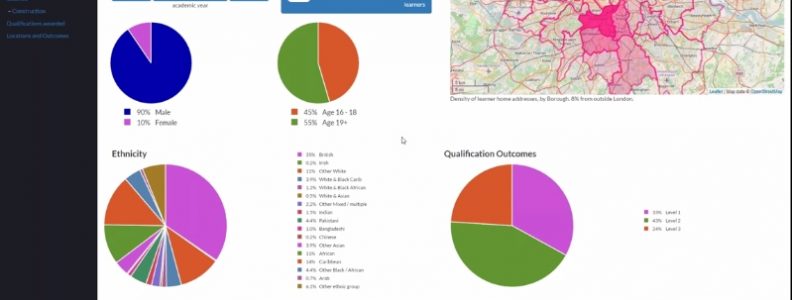As a collaborative R&D project focused, initially, on the construction skills challenges of London and the southeast, our SkillsPlanner team has learned a lot about the need for joined-up thinking in and around the capital. We have also watched the London Mayoral and Greater London Assembly elections with considerable interest. Now that the votes have been cast, we hope Sadiq Khan, his GLA colleagues, and his proposed “Skills for Londoners” Task Force will make a profound difference in how we deliver future skills to support new housing and infrastructure over the next five years – and beyond.
As the CIOB’s CEO Chris Blythe recently remarked, the lack of a construction skills pipeline could damage the London Mayor’s housing and infrastructure plans. But it’s not just about our immediate skills shortages.
We also need to show young people that they can enjoy a long, exciting and rewarding career while they help deliver our built assets. And as London grows and technologies change, our people also need to know they can retrain, gain new knowledge and skills, and continue to contribute to the London construction economy.
Our ambitions seem well aligned with Mr Khan’s manifesto commitments:
- to “develop a city-wide, strategic approach to skills…”
- to “map the skills gap”
- to “create a pipeline of skilled London workers”, and
- to “close the gap between our … housing targets and the need for more skilled construction workers in London.”
To do this, in our view, high quality information – data – will be vital. If we can clearly forecast future skills needs and match London organisations’ ability to deliver, we can reassure both workers and employers – and London policy-makers. I hope Sadiq Khan encourages more pan-London data-sharing, including via SkillsPlanner, to help us make construction better connected and more resilient.


 The SkillsPlanner project was formally launched on 24 February 2016 at the Institution of Civil Engineers in London. Over 130 guests listened as programme director Rebecca Lovelace introduced the project, followed by keynote speakers Andy Mitchell CBE, CEO of Tideway (right), and Sir Nigel Shadbolt, founding partner of Seme4 – both organisations are
The SkillsPlanner project was formally launched on 24 February 2016 at the Institution of Civil Engineers in London. Over 130 guests listened as programme director Rebecca Lovelace introduced the project, followed by keynote speakers Andy Mitchell CBE, CEO of Tideway (right), and Sir Nigel Shadbolt, founding partner of Seme4 – both organisations are 

 During the evening, #SkillsPlanner featured heavily on Twitter, with over 200 tweets from more than 50 contributors. Read our
During the evening, #SkillsPlanner featured heavily on Twitter, with over 200 tweets from more than 50 contributors. Read our 
 “Some of this data might be publicly available and we’re making good progress cataloguing these. Other data, such as individual learner data, is available but under a restricted license so we’ll be working to gather that data. In all our work, we are being scrupulous in how we filter, aggregate and anonymise data so that no commercially sensitive information is shared and to ensure compliance with the Data Protection Act.”
“Some of this data might be publicly available and we’re making good progress cataloguing these. Other data, such as individual learner data, is available but under a restricted license so we’ll be working to gather that data. In all our work, we are being scrupulous in how we filter, aggregate and anonymise data so that no commercially sensitive information is shared and to ensure compliance with the Data Protection Act.”
